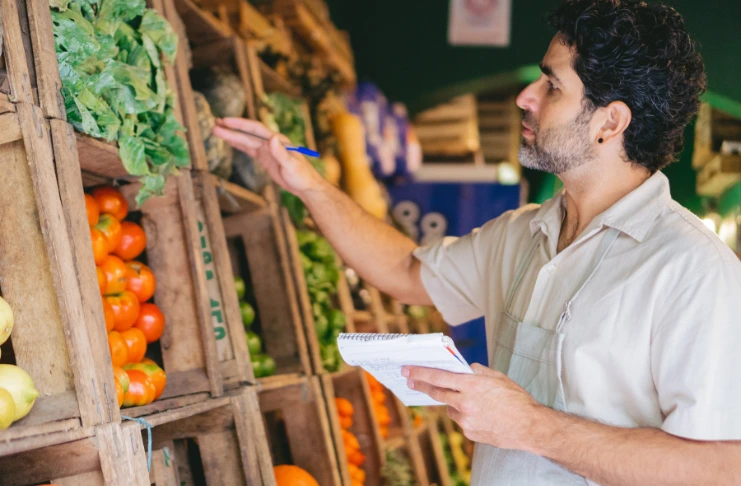
Most restaurants don’t lose money because they lack customers. They lose it because costs quietly outpace revenue. Rising food inflation, labor shortages, and increased operational overheads, when left unchecked, compound quickly.
In fact, according to the National Restaurant Association, labor and food costs now account for more than 55% of total sales for most operators, leaving little room for error in cost management.
Yet many restaurants still approach cost control reactively, by cutting expenses when margins decline, rather than building proactive systems to track, manage, and optimize spending.
That approach may lead to short-term savings but impacts the quality, consistency, or staff morale in the long term. Strategic cost control, on the other hand, helps make smarter decisions on where your money goes, identifying areas of overspend, and implementing operational improvements that improve both guest experience and profitability.
This blog will understand the cost structure of a restaurant, the importance of managing the costs, and explore the most effective restaurant cost control measures.
Understanding the Restaurant Cost Structure
A common reason food cost control efforts fail is that operators don’t consider the full picture. Every restaurant’s expenses fall into two primary categories: fixed costs and variable costs. Knowing how they differ and how they affect finances is the first step toward effective cost management.
A. Fixed Costs
Fixed costs are consistent, recurring expenses that don’t change with sales volume. While they offer little flexibility, fixed costs must be carefully budgeted to avoid long-term cash flow issues.
- Rent and lease payments: Rent is one of the largest fixed costs, and varies based on square footage and location.
- Licensing and permits: Annual or periodic costs for FSSAI registration, fire safety NOCs, health department clearances, etc.
- Staff salaries: Managers, chefs, and core team members on fixed monthly pay, irrespective of hours worked.
These costs remain stable but should be reviewed annually for renegotiation or optimization opportunities.

B. Variable Costs
Variable costs shift based on output, customer volume, and operational patterns. These are where most cost-saving efforts can be focused.
- Food and Beverage Costs (COGS): COGS includes raw ingredients, packaging, and beverages. These fluctuate with menu demand, vendor pricing, and inventory control.
- Hourly Wages: Wages include payments to servers, line cooks, cleaners, and delivery staff, which are typically based on shifts or hours worked.
- Utilities: Utilities account for electricity, gas, water, or waste management expenses that rise with increased footfall or longer operating hours.
- Operational Supplies: Supplies include napkins, cleaning materials, cooking gas, and disposables. These costs are often overlooked but are a crucial aspect of effective financial management.
Additionally, prime cost is the sum of the cost of goods sold (COGS) and labor expenses, typically representing 55-65% of a restaurant’s total revenue. That’s why it’s the single most important metric to monitor regularly. Even a small shift in prime cost can have a noticeable impact on bottom-line performance.
Moreover, to stay financially healthy, restaurants should not only monitor absolute costs, but also track them as percentages of revenue. These cost ratios include-
- Food cost percentage, calculated as Total food cost/Food sales
- Labor cost percentage, calculated as Total labor cost/Total revenue
- Operating cost percentage, calculated as Total overhead expenses/Total revenue
- Occupancy cost percentage, calculated as Rent and related fees/Total revenue
These ratios give you a normalized view of performance, regardless of fluctuations in revenue. When tracked consistently, they reveal patterns, help identify problem areas, and support data-driven decisions around menu pricing, staffing, or supplier changes.
Why is Restaurant Cost Control Important?
Without strong cost control systems in place, even high-revenue operations can struggle with thin or negative margins. Strategic cost management not only protects profitability but also contributes to long-term stability, operational clarity, and reinvestment opportunities.
Here are six key reasons food cost control should be your top priority-
1. Increases Contribution Margin Per Cover
When you reduce food waste, optimize prep, or negotiate better supplier rates, the cost per dish goes down, while the selling price remains the same. This improves your contribution margin per cover without needing to increase prices or traffic. In multi-unit operations, even a small gain per cover can translate to tens of thousands of dollars annually.
2. Improves ROI
Every hour the restaurant is open, it costs them money in terms of utilities, staff wages, and equipment use. And if labor is scheduled inefficiently or prep time isn’t aligned with footfall, you will lose ROI per hour.
That is why controlling labor and utility costs ensures you’re generating revenue that justifies the time and resources invested in each service period.
3. Creates Price Flexibility
Cost control gives you the flexibility to respond to competitive pressure or economic conditions without affecting your profitability. If your food cost percentage is consistently within the target range, you can run promos, price adjustments, or limited-time offers to enhance revenue and even gain full visibility into how they’ll impact your profitability.
4. Supports Better Capital Allocation
Access to accurate cost data gives you more confidence in making capital decisions, whether it’s upgrading kitchen equipment, investing in tech, or expanding to a second location. Operators with disciplined cost management free up capital faster and allocate it more effectively than those constantly compensating for operational inefficiencies.
5. Informs Strategic Vendor Decisions
Accurate cost tracking helps identify when vendor pricing no longer aligns with your operations. Instead of relying on overall price changes or switching suppliers blindly, operators can use real COGS data to renegotiate contracts and optimize purchases for better volume-based rates. Over time, this creates a more cost-resilient supply chain.

Key Restaurant Cost Control Strategies
Once you understand where your costs originate, the next step is implementing systems to manage them effectively. Cost control across food, labor, inventory, utilities, and vendor demands a unique approach to reduce inefficiencies, protect margins, and maintain operational consistency.
Here are some key restaurant cost management strategies to help you maximize your restaurant savings-
1. Food Cost Management
1.1 Accurate Recipe Costing and Portion Control
Controlling food costs begins with knowing exactly what each dish costs to produce. Every ingredient should be quantified with its yield, food waste percentage, and portion size. This helps avoid underpricing and ensures margins are preserved even as ingredient prices fluctuate.
Standardizing recipes with precise portions also prevents overuse during prep or plating. This is where it becomes a good idea to use a comprehensive inventory management system with recipe management capabilities to standardize recipes and manage inventory usage in real time.
1.2 Menu Engineering
Not all popular dishes are profitable, and not all profitable dishes are selling. Menu engineering combines sales data with food cost percentages to classify menu items by performance. The goal is to promote high-margin “stars” and phase out “dogs” that are low in both profitability and popularity.
Analyzing contribution margins allows operators to feature the right items more prominently, adjust pricing intelligently, and substitute ingredients to maintain margins without sacrificing quality. For instance, you can consider updating pricing or rotating features every few months based on food cost volatility to ensure margin stability even during inflationary periods.
1.3 Inventory Management and Waste Reduction
When it comes to inventory management, managing accurate stock levels is a real balancing act. While overstocking leads to spoilage, understocking leads to missed sales and poor customer experience. But a disciplined inventory process helps avoid both. Daily or weekly inventory audits help detect usage patterns and flag discrepancies, and a First-In, First-Out (FIFO) system reduces the risk of spoilage.
Further, technology such as integrated inventory software can track ingredient usage in real time, set par levels, trigger automatic reorder alerts, and highlight slow-moving stock. It also supports waste tracking by capturing losses like spoilage, pilferage, or incorrect storage, giving operators the data needed to address root causes.
INDUSTRY INSIGHT
For every $1 invested in tracking and reducing food waste in restaurants, operators can achieve up to $8 in cost savings and reduce food waste by 10% by increasing measurement and engagement. This is because food waste directly cuts into your prime costs. Implementing systems like portion control, spoilage tracking, and waste logs not only reduces landfill output but also brings measurable returns.
2. Labor Cost Control
2.1 Smart Scheduling and Forecasting
Scheduling based on guesswork or past habits leads to overstaffing during slow periods and understaffing during peak hours. Instead, operators should use historical sales and traffic data, which is easily available through POS systems, to forecast demand by hour, day, and even weather conditions.
With proper forecasting, schedules can be built to match actual demand. Service hours with a low footfall can be covered with fewer staff, while high-volume periods require optimal staff.
Moreover, you can also bring flexibility to staffing with split shifts and part-time roles. So, instead of assigning an 8-hour block to one team member, two 4-hour shifts will ensure better efficiency while keeping labor costs proportional to actual service volume.
2.2 Cross-Train Staff
A cross-trained team is one of the most effective ways to control labor costs without compromising guest experience. When front-of-house or kitchen staff can step into multiple roles, such as host, server, and prep, it reduces your reliance on fixed roles or overstaffing.
Cross-training also allows you to schedule fewer staff during non-peak hours and reduce the need for specialist hires. For example, training your prep cooks to assist during service rushes may eliminate the need for an additional line cook on slower days.
From a retention perspective, cross-trained employees often feel more engaged and valuable, which can help reduce turnover.
2.3 Monitor Labor Cost Percentage
Tracking labor cost as a percentage of sales is another great way to gain real-time insight into efficiency. Many modern labor tools integrate with POS systems to provide dashboards that display labor spend against sales by shift, department, or employee.
This allows restaurant operators to make data-informed adjustments on an ongoing basis rather than waiting for end-of-month reports.
3. Technology-Driven Cost Control
3.1 POS Systems and Inventory Management
Integrated POS and inventory management systems offer real-time visibility into ingredient usage, sales trends, and stock levels. Every item sold instantly deducts the corresponding ingredients from inventory, allowing operators to compare theoretical vs actual usage and flag issues like waste, pilferage, or over-portioning.
These systems can also automate reorder alerts when stock dips below defined par levels. That prevents both overstocking (which ties up cash and leads to spoilage) and understocking (which disrupts service). Over time, accurate data on ingredient movement ensures more strategic purchasing.
Most importantly, integrated systems reduce human error and reduce the time required for manual inventory checks and reconciliations, freeing up managers to focus on higher-value tasks.
3.2 Kitchen Display Systems and Digital Ordering
Technology in the front and back of house contributes directly to cost savings. Kitchen display systems (KDS), which replace printed tickets with digital screens, speed up communication between servers and kitchen staff. As a result, orders arrive instantly and can be tracked in real time. Thus, reducing errors, food waste, and delays.
Combined with digital ordering via self-service kiosks or QR-based menus, restaurants can also streamline labor needs. When guests place orders themselves, fewer front-of-house staff are needed per shift, especially during peak hours. In fast-casual formats, this can translate into measurable labor cost reductions without compromising service speed or accuracy.
3.3 Analytics and Reporting
Automated reporting tools and dashboards within integrated restaurant software pull data from across the operation, including sales, labor hours, and inventory usage to give decision-makers a consolidated view of cost performance.
This is where key metrics like food cost, labor cost, or menu item performance can be monitored daily, not just weekly or monthly.
Further, trend reports and variance tracking help operators spot any cost discrepancies early. For instance, considerable differences in actual or recorded inventory may indicate wastage or pilferage, while rising labor costs may reflect overscheduling or lower productivity. The sooner these trends are visible, the sooner you can take corrective actions.

4. Vendor and Supply Chain Optimization
4.1 Negotiate with Suppliers
One of the most effective ways to reduce the cost of goods sold (COGS) is by renegotiating supplier contracts. Restaurants that purchase in volume can use their buying power to secure better bulk pricing, loyalty-based discounts, or rebates.
Additionally, switching to local or seasonal suppliers for some ingredients can offer opportunities for lower pricing (due to reduced transport costs and seasonal abundance) and better freshness. Reassessing vendor agreements every 6–12 months helps you stay aligned with market fluctuations and competitor pricing.
4.2 Streamline Deliveries
Frequent, separate inventory orders increase per-order costs and can cause last-minute purchases at premium prices. By consolidating deliveries and establishing consistent ordering cycles, restaurants reduce handling costs, minimize waste from overstocking, and maintain better stock discipline.
Another way to manage costs is to group ingredient orders by use case. For instance, all dairy products can be ordered on Monday and produce on Wednesday to improve inventory planning and reduce spoilage, especially for perishables.
4.3 Audit Invoices and Contracts
Even your most reliable vendors can increase prices over time, whether through unnoticed markups, additional fees, or line-item discrepancies. Monthly or quarterly invoice audits help identify such issues early.
It’s also critical to review long-standing supplier contracts. Many restaurants unknowingly operate on outdated terms that no longer reflect current volumes, needs, or market conditions.
Periodic renegotiation ensures your contracts evolve with your business and help maintain a more cost-effective supply chain.
5. Staff Training and Management
5.1 Train Staff on Cost Saving Measures
Training should go beyond basic food prep or service etiquette. Train BOH teams to follow portion control guidelines, use prep yields efficiently, and reduce waste during peak and off-peak hours. FOH teams can be trained to upsell high-margin dishes and minimize comped items through better guest engagement.
When everyone understands the financial impact of each decision, like over-pouring a drink or pushing an incorrect order, they become more mindful of daily operations.
5.2 Evaluate Staff Performance
Cost awareness should be embedded into how staff performance is reviewed. Instead of solely measuring speed or customer feedback, consider metrics like prep accuracy, food wastage per shift, or average ticket value generated by servers. Using this data helps identify which team members need additional coaching and which practices should be reinforced.
5.3 Incentivize Cost-Saving Behavior
Small incentives can drive big behavioral shifts. Reward the staff for meeting weekly waste reduction goals, suggesting process improvements, or identifying recurring inventory issues to build a sense of ownership.
This can be done through monetary bonuses, recognition, or team outings, and ensure that cost-efficiency is a shared priority.
5.4 Prevent Internal Theft and Wastage
Effective staff training can also help prevent internal theft and wastage through clear systems for inventory checks, POS tracking, and access control. When staff know that processes are in place and that transparency matters, it naturally deters misuse of resources and encourages a more responsible work culture.

6. Operational Cost Cutting
6.1 Energy and Utility Savings
Utilities can account for 3-6% of total restaurant operating costs, but most operators only notice the expense when bills spike. Consider investing in energy-efficient appliances, such as Energy Star-rated refrigerators or low-flow dishwashers, to lower utility usage by 10-20% over time.
Additionally, monitoring HVAC usage and automating lighting systems also helps reduce consumption during off-hours. In kitchens, switching from gas to induction ranges or improving ventilation to minimize heat loss can result in measurable reductions in electricity and cooling costs.
6.2 Reduce Non-Essential Overheads
Recurring operational expenses can slowly eat into your revenue if left unchecked. This may include monthly charges for underutilized software tools or outdated digital subscriptions that may seem minor individually, but often add up to significant waste over time.
Here, conducting quarterly audits of these line items allows operators to identify and eliminate inefficiencies. Even small shifts, like transitioning to paperless systems or renegotiating outdated service contracts, can yield long-term financial benefits without impacting guest service or team productivity.
6.3 Cleaning and Maintenance
Maintenance is one of the easiest expenses for restaurants to postpone until equipment fails and costs increase. So, implementing a preventive maintenance schedule keeps kitchen essentials like ovens, refrigerators, and HVAC systems running efficiently and extends their lifespan.
Plus, regular deep cleaning not only ensures food safety compliance but also reduces strain on appliances, improves hygiene ratings, and prevents costly surprise repairs. For example, a clogged vent or poorly maintained compressor can increase energy consumption by up to 30%, whereas scheduled servicing can avoid those inefficiencies entirely.
Conclusion
Effective cost control gives restaurant operators clarity to make day-to-day decisions easier and long-term planning more realistic. When you understand exactly where your money goes, you can make confident trade-offs, test new ideas without unnecessary risk, and respond faster when market conditions shift.
And it’s not about cutting corners. Restaurant food cost control helps improve margins through better habits, smarter systems, and more informed choices. Over time, this discipline enhances the financial and operational strength of the restaurant operations.
Frequently Asked Questions
Cost control in a restaurant refers to monitoring and managing expenses like food, labor, utilities, and overheads to maintain profitability. It involves budgeting, forecasting, and taking corrective actions to avoid overspending or waste.
Controllable costs are expenses that restaurant operators can actively manage or influence, such as food and beverage costs, labor wages, utilities, supplies, and marketing. These differ from fixed costs like rent or loan repayments.
Restaurants can manage costs by standardizing recipes, keeping close tabs on inventory, and scheduling staff based on actual demand. They can also use technology for real-time tracking and regularly audit vendor contracts.
To reduce costs in a restaurant, owners must optimize food purchasing, minimize waste, cross-train staff, and use energy-efficient equipment. Menu engineering and renegotiating supplier rates are also effective ways to reduce unnecessary spending.
A good example of cost control is portion control, which involves using standardized recipes and kitchen scales to ensure consistent dish sizes. This limits the overuse of ingredients, reduces waste, and improves profit margins without compromising customer experience.
The ideal costing method for restaurants is actual costing, where real ingredient costs are used to calculate food cost per menu item. When combined with insights from software tools and sales data, it gives accurate profit margins and helps adjust pricing.
Food and labor are typically the two largest restaurant costs. Together, they often make up 55-70% of total operating expenses, which is why careful tracking and optimization of both is critical for profitability.
Management fees refer to payments made to individuals or companies that oversee restaurant operations. These can be a flat fee or a percentage of revenue, covering services like staffing, budgeting, vendor negotiation, and performance monitoring.








